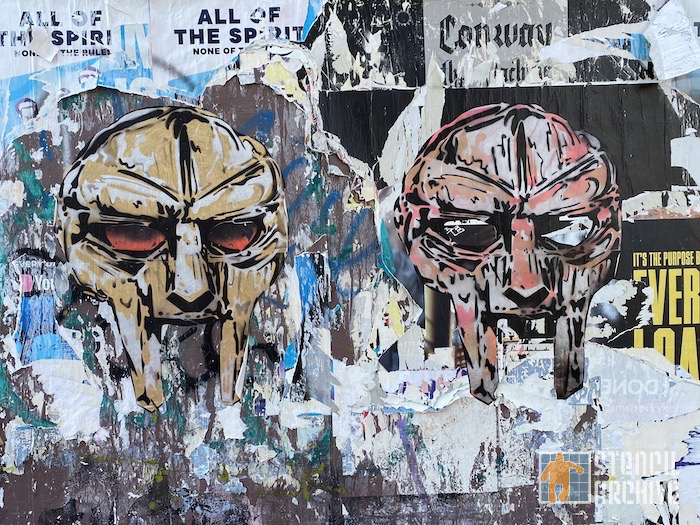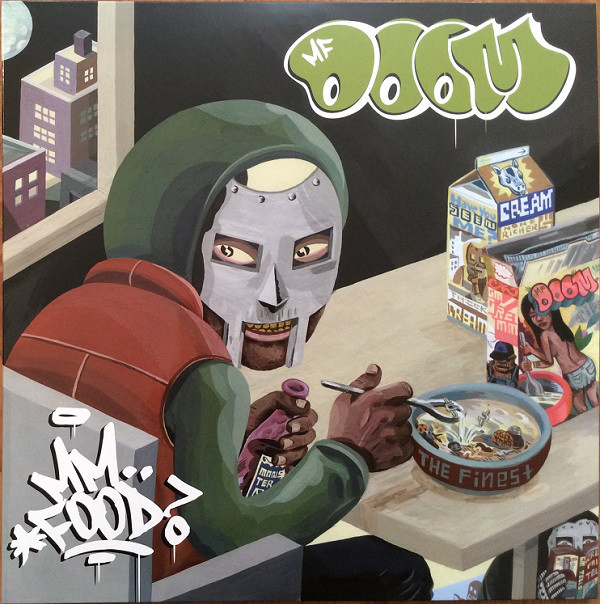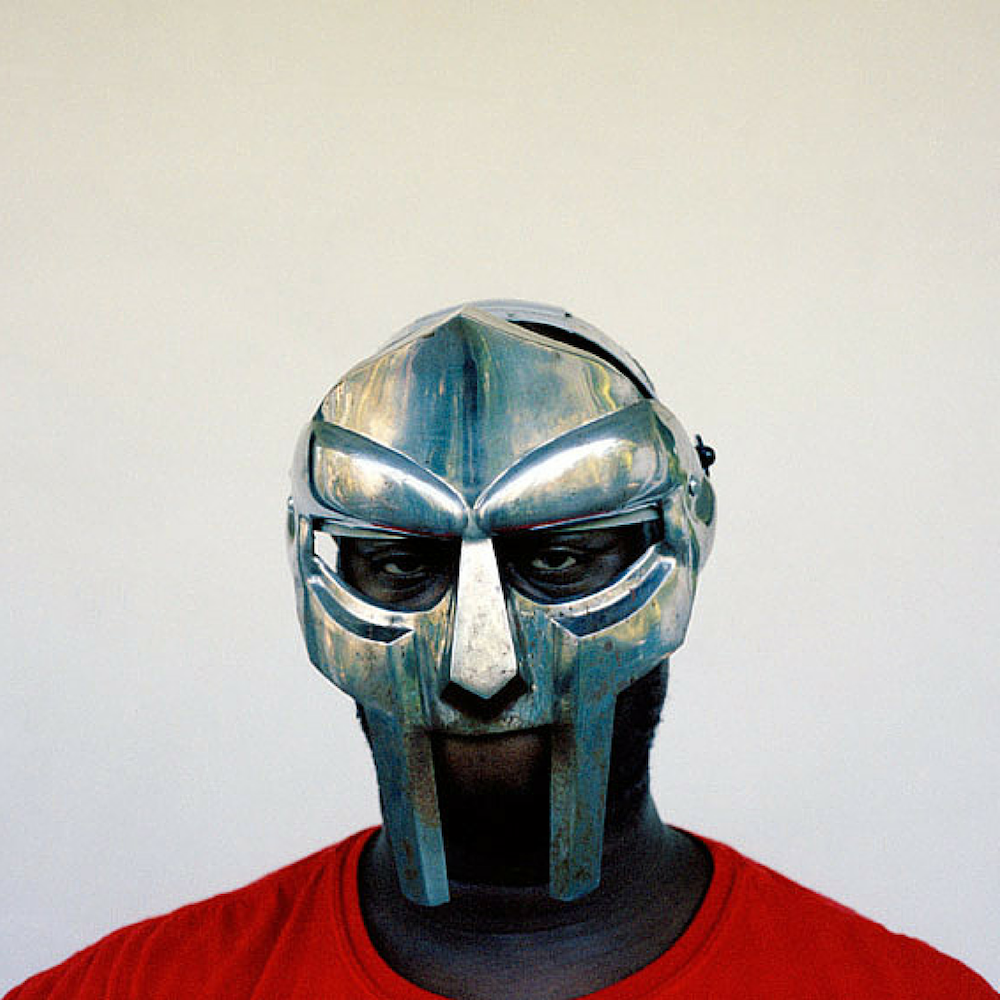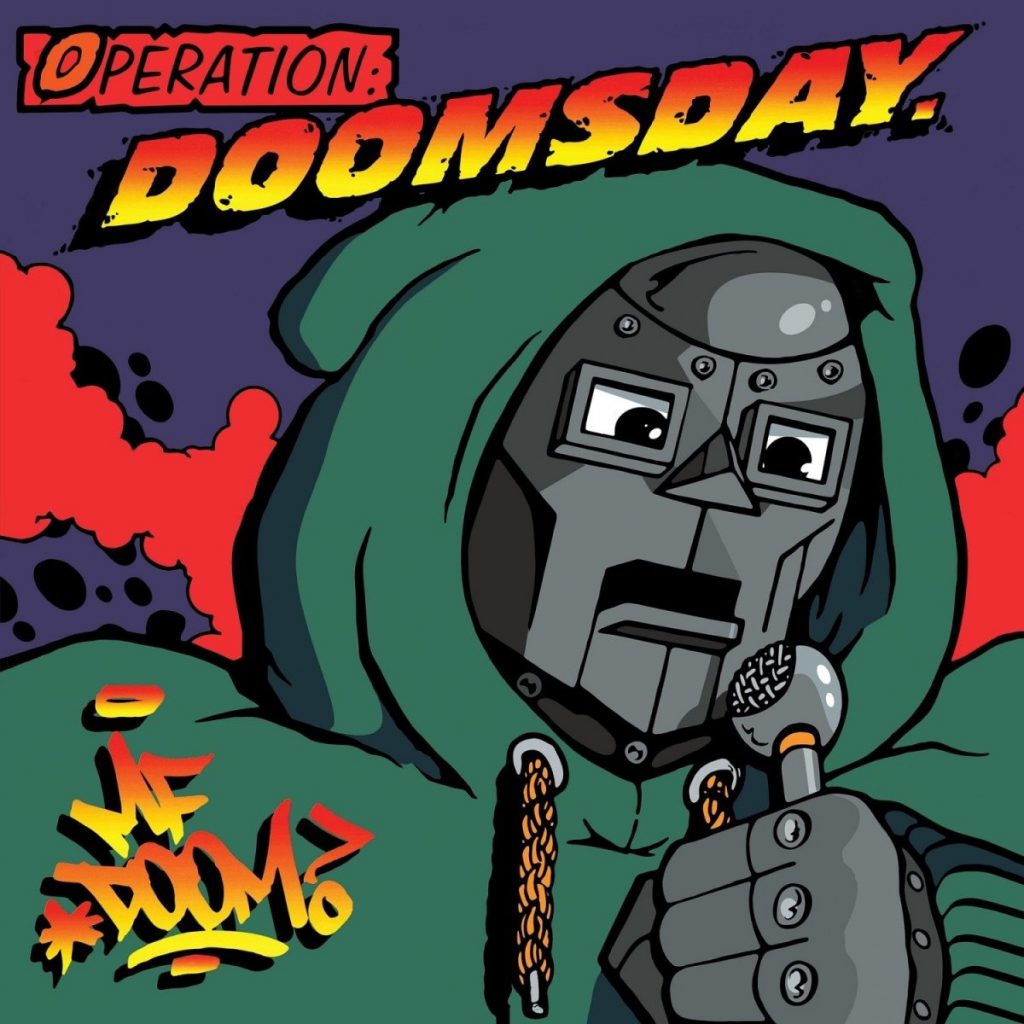
I didn’t care much about MF Doom until December 12, 2020. Going through my Saturday morning routine, I had my music on shuffle while sifting through the agenda. After Tyler, The Creator, BROCKHAMPTON, and Thundercat all logged their entries on my phone, Spotify’s radio station directed me somewhere else.
Hip hop still, but old school. The track hooked me from the get-go, starting with a ridiculously smooth guitar riff that loops throughout the song and segues right into the first verse. I ended up listening to it no less than six times that day (thanks for the stats, Last.fm).
If you know Doom, you probably realized that I’m talking about “Rapp Snitch Knishes” from his 2004 album Mm…Food, which is of course an acronym for his very own stage name. While the allusion is hidden in plain sight, it still took me a while until I realized the wordplay.
Doom’s music feels much the same way: Everything he does in it is presented without any conceit, and yet there’s more and more to unpack every time I return to his work.

The Time We (Sur)Faced Doom
While Doom loved to stay rough around the edges in all that he did, Metal Face had his moments of true greatness—and not too few of them. No other artist would have been able to flawlessly weave Charles Bukowski’s recital of his poem “Dinosauria, We” into multiple braggadocio verses about his apocalyptic rap powers (though I felt a strong urge to skip the intro after a couple listens). No rapper would even think of the evocative sonic clue that is the “audio daily double”. And which other MC could manage to rap over an “Accordion”, spit bars on hula music that sounds as if taken straight from a SpongeBob episode (“Meat Grinder”), and belch a reasonably credible fake Italian soprano (“Figaro”) in the span of just one album? His 2004 Madlib collab Madvillainy remains an unquestionable apex in the history of both him and his genre.
Doom’s uncanny feel for how to tie together the most disparate samples has become a major inspiration for a fleet of contemporary trailblazers, including the aforementioned Tyler, as well as much of the œuvre of Kanye West. Kanye could perhaps be credited with perfecting the art of making sampling appear as effortless, as listening to the end product often feels: everything is in perfect flow.
But while his approach might be a called a perfection of the technique, this really isn’t what Doom was all about. That’s because his seemingly rough and ready tunes are truly reflective of his own twisted and ever-turning career path. Born David Dumile in 1971 and raised on Long Island, NY, he lived and breathed America in all its glamor and gloom. After his group KMD disbanded following the tragic death of his brother and bandmate DJ Subroc in 1993, Dumile wouldn’t return to music until late into the decade, when he resurfaced as the masked villain he’s now remembered as.

Rappers Need Chapstick
Doom doesn’t only stand out because of his enigmatic appearance, but also because of the lack of pretense that his disguise allows him. He shines brightest when his alter ego says it how it is, smacking rhyme after rhyme into the listener’s ear, no holds barred. Rarely does he do it better than on 2009’s “THAT’S THAT”, where “Cornish hens switching positions” meet “auditioning morticians, saw it in a vision, ignoring prison”.
Perhaps even greater, however, is his infectious zeal in “Rhymes like Dimes” off his debut Operation: Doomsday (1999), which has Doom bring in all the things he does best: Ad-libbing on a killer soul sample by Quincy Jones, letting his song partner-in-crime, DJ Cucumber Slice, sign off by naming various food items while frantically laughing, and, most importantly, dishing out one outrageously well-crafted rhyme after another with outlandish precision.
What Dumile left us with are some of the most iconic tracks in rap history, introducing not just his supervillain persona to the world, but also a slew of musical techniques which have had an immense influence in shaping the genre, not the least of which was his powerful use of samples. I could recognize “All Caps” with its hammering piano bass opener within seconds without knowing neither artist nor track title. Doom’s been with me all along, I just didn’t know it.

Doomsday
And so, when on December 12, I walked down to the local kebab store with my headphones on, listening to “Knishes” for the sixth and final time, it started to dawn upon me what I was missing out on all these years. Doom’s music doesn’t only feel real, it is real. He talks about being “true to she ski mask, New York’s my origin” and playing “a fake gangsta like an old accordion” because that’s who he is and where he’s from—he raps rough, simply because he never got the chance to tread lightly. As he put it so aptly: “Only in America could you find a way to earn a healthy buck and still keep your attitude on self-destruct”.
Much less real to me however was Doom’s death announcement on December 31. Not only did he die entirely unexpectedly, but by the time the knowledge of his passing entered the public domain, he had already been gone for two months. Dumile lived a life shrouded in metal-clad mystery, even up until his final day; MF Doom however was a persona that rarely shied away from scheming on the mic, even if perhaps not always in the same flesh. His inner world can be found in his bars and rhymes, which, much like dimes, “mostly keep cash but tell about the broker times”.
How Doom spent the last decade of his life—presumably in his London exile after being refused re-entry into the States in 2010—no one really knows for sure. What we do know, however, is that finally, the illest villain could be laid to rest.
stay gold ponyboy
